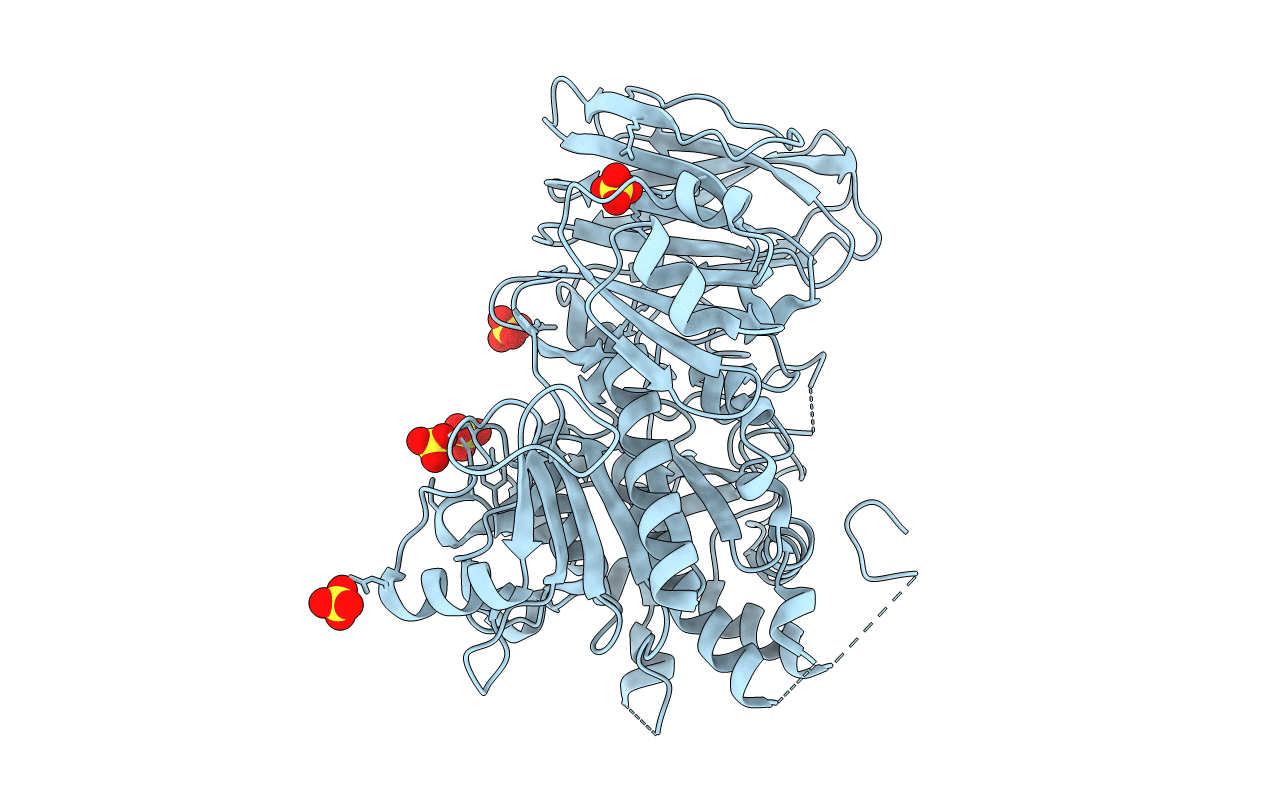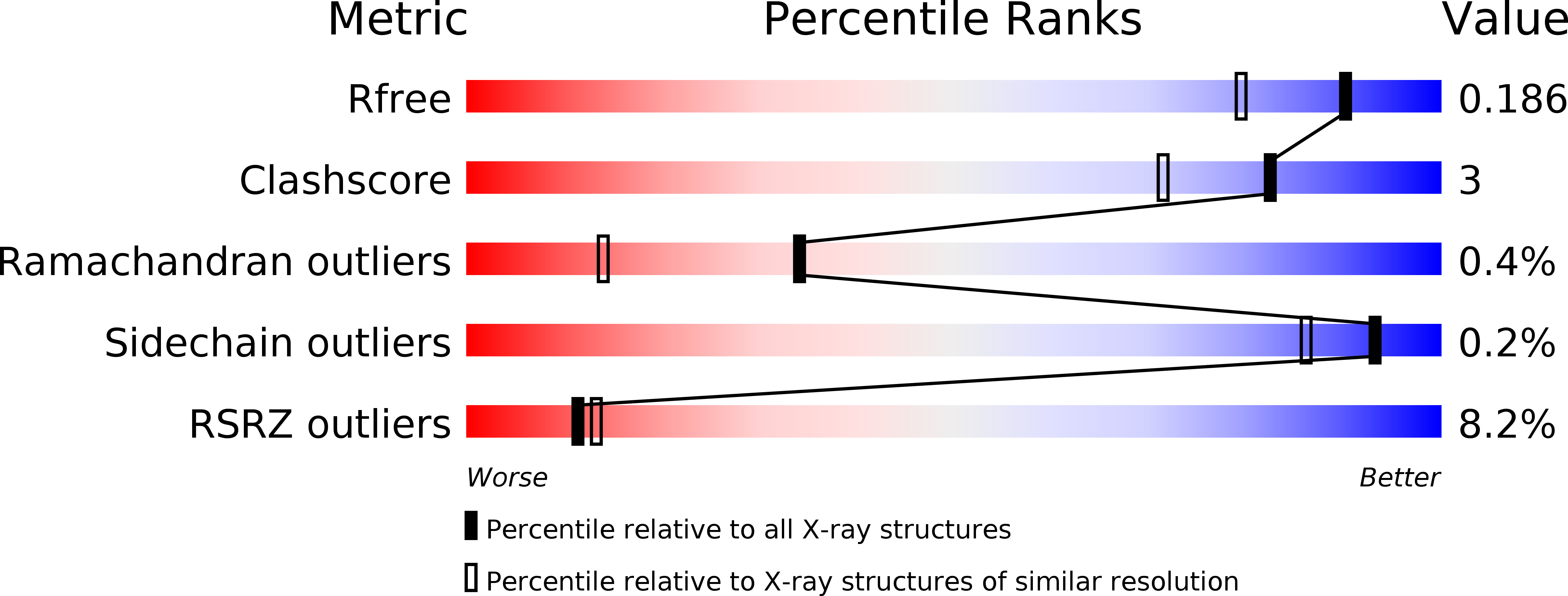
Deposition Date
2018-10-29
Release Date
2019-06-26
Last Version Date
2023-10-11
Entry Detail
PDB ID:
6MW4
Keywords:
Title:
Structure of pseudoprotease CspC from Clostridioides difficile
Biological Source:
Source Organism:
Peptoclostridium difficile (strain R20291) (Taxon ID: 645463)
Host Organism:
Method Details:
Experimental Method:
Resolution:
1.55 Å
R-Value Free:
0.18
R-Value Work:
0.16
R-Value Observed:
0.16
Space Group:
C 2 2 21


